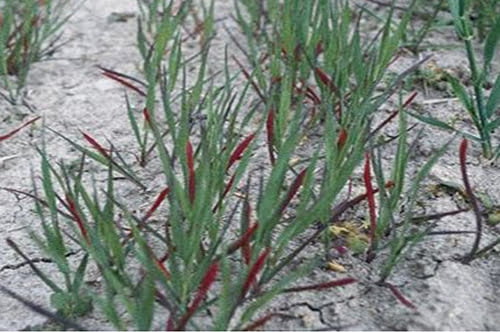Wheat Farming
Products
KG/Da
Super Economic Proposal
Products
KG/Da
What if wheat is not fed sufficiently?
If wheat cannot get sufficient nutrients from the soil during its growth, it may give the following signals.
Nitrogen (N) deficiency:
One of the necessities for a healthy wheat development and yield crops is adequate nitrogen intake. The most obvious indicator of nitrogen deficiency is the yellowing that will appear on the leaves. Starting from the tip of the wheat leaves, a color change from yellow to light green is observed in the leaf root. As it can be seen in the wheat on the right image below, the knuckle defined as stunted development causes shortness of breaks and wrinkles occur in the plant.
As illustrated in the images, nitrogen deficiency leads to yellowing in plants, loss of vitality and decrease in crop quality and productivity.
Phosphorus (P) deficiency:
Phosphorus is one of the basic nutrients of plants which stimulates root, flower and fruit development and directly affects crop maturity. Most plants require additional phosphorus
in cold weather in areas with limited root growth during rapid vegetative growth and in high limestone or acid solids. Phosphorus deficiency is not easy to spot with a naked eye; however, it may be distinguished with observing slow, weak and short looking growth. Plants having phosphorus deficiency generally take a darker green color than usual and show pinkness at the roots as seen in the image.
Potassium (K) deficiency:
Potassium is essential for the transportation of sugars in the plant and the formation of starch and oils. Potassium helps regulate leaf opening and closing which provides the efficient use of water in the plant. Potassium deficiency causes slow growth in plants,







